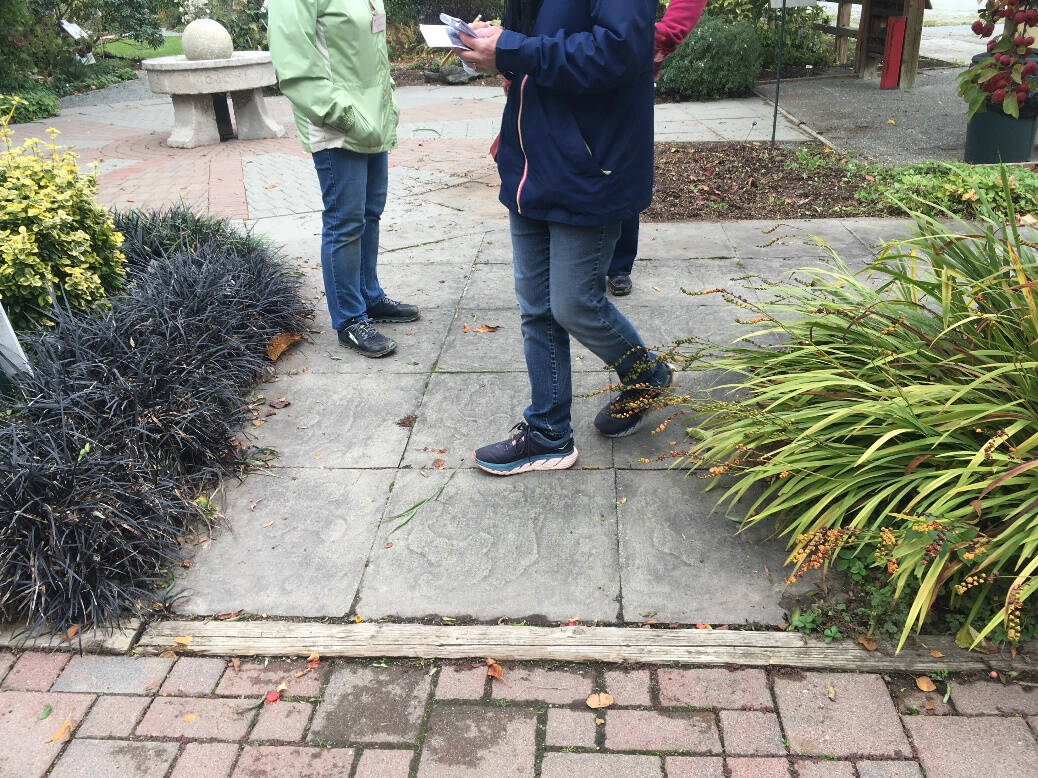Accessible gardening is an approach to gardening that enables people with physical and mental challenges to garden. The goal is to match where and how you garden with your level of activity — what you can do and how you can do it. It takes physical barriers out of gardening and reshapes traditional gardening approaches to fit with what a person enjoys.
Six tips are key to successful adaptive gardening. This is the first in a series of four articles that will discuss these tips. This week, the most important, tip No 1: Keep your garden small and your efforts focused. Base material and plant selection is key.
Materials to ensure safety in the garden must take top priority: paths should be smooth and free of obstacles that might cause the gardener to fall or impede the movement of a wheelchair or walker.
Use smooth-but-solid materials to build paths and ramps such as textured concrete or roughened wood. Well-tended grass is often acceptable, but gravel, wood chips, or cobbled stones are not always suitable for people with reduced mobility. Pavers or concrete offer smooth travel; well-compacted gravel can also set up very hard and smooth.
Many other options exist for base materials, including poured concrete that can be tinted and textured, bricks, or specialty permeable pavers that allow moisture to penetrate. More expensive options can also be considered, so be sure to fit the design to the budget.
Use a minimum of doorways or gates. Keep transition spots smooth. You can start with well-compacted gravel paths, but over time, it may be necessary to change as mobility becomes more challenging.
The Master Gardener’s mantra is “right plant, right place” and is an important tip in keeping a garden manageable. Consider the size and variety of plants and how much attention individual plants require: the options are mind-boggling.
Think carefully about how the plants are likely to grow in three to five years. Avoid having to constantly prune or re-organize due to over-grown or inappropriately placed plantings.
Choose plants that require less care. Careful plant selection can drastically reduce the maintenance needed in the garden and the ability of the gardener to successfully accomplish gardening tasks.
For example, annuals are lovely but must be purchased, planted, repeatedly fertilized, deadheaded and eventually removed every year. Perennials and bulbs have the advantage of reemerging annually and generally require less care. Small shrubs that have a pleasing natural growth and don’t require yearly pruning can be the bones of the garden.
Select smaller plants. Before purchasing a plant, always ask about the expected size. Large plants are more challenging for gardeners with physical limitations. Accessing the top of the plant for pruning, harvesting, or application of pesticides can be difficult and might require the use of ladders.
Dwarf fruit trees, which grow in height slower than standard trees, make caring for trees easier and allow the gardener to stay safely on the ground. Dwarf fruit trees, if left unchecked, can still reach 10 or more feet in height: the gardener must take care to keep the tree dwarf sized through annual pruning.
We all know that change is the one constant in life, so build some resilience into the inevitable. With accessible gardening, we can find ways to maintain a healthy level of physical and psychological wellness while meeting new challenges.
The Master Gardeners have designed a small Accessible Garden as part of their Woodcock Demonstration Garden at 2711 Woodcock Road and are currently fundraising for its construction.
Anna Plager is a Master Gardener of Clallam County who has used accessible gardening practices for many years. This article is based on a presentation by Master Gardener Jeanette Stehr-Green.
More accessible gardening tips
• Accessible Gardening Tips 2 and 3: Select a garden site with your specific needs in mind and keep your most important tool in prime form.
• Accessible Gardening Tip 4: Four types of garden structures (raised beds, elevated beds, vertical gardens and container gardening).
• Accessible Gardening Tips 5 and 6: Select appropriate tools and accessories and secure the gardening support you need and deserve.



